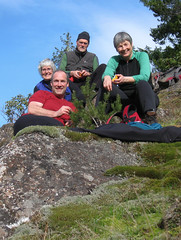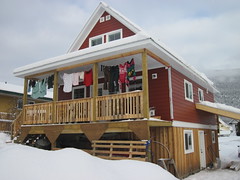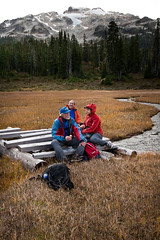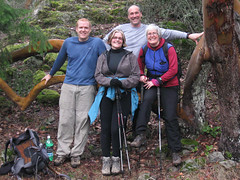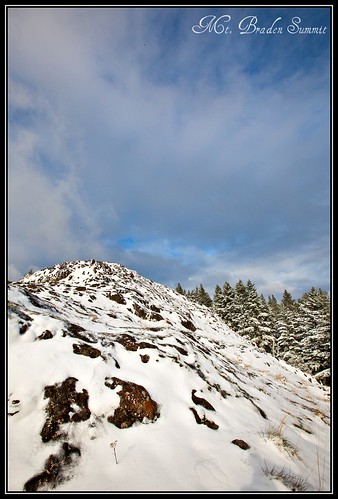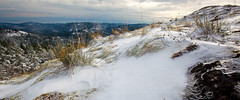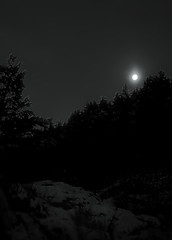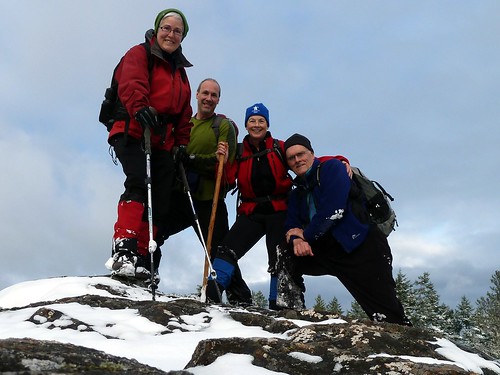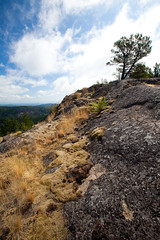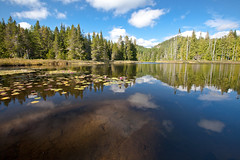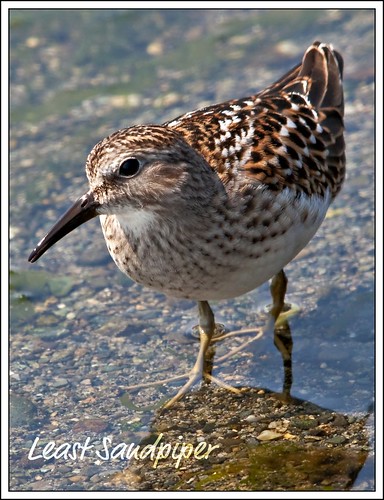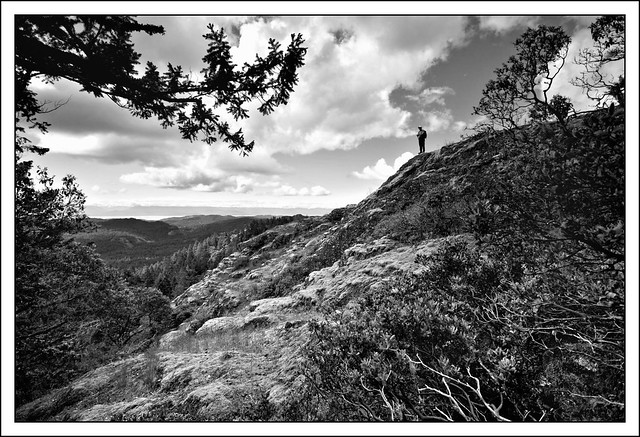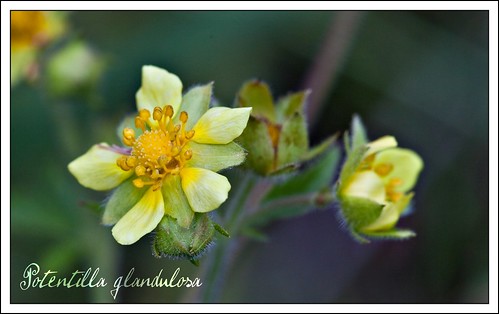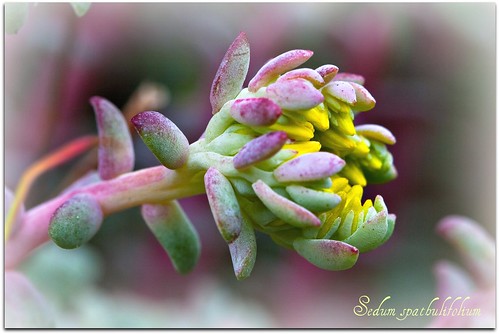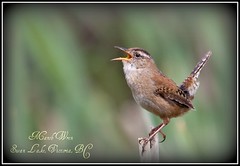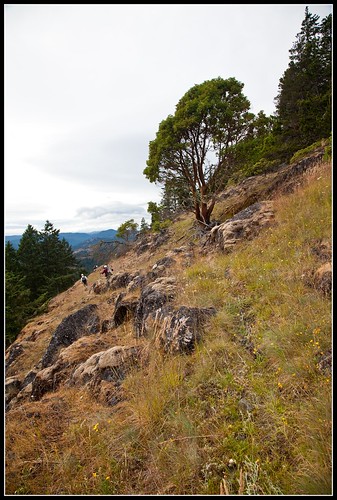A few days ago I decided to pack up the camera, my big lens, the tripod, and my new monopod and head out to Witty's Lagoon. I was hoping to catch a picture or two of the Dowitcher that Ian Cruickshank reported seeing on the VIBirds list. The moon was just past full, so I knew the tides would be quite extreme, and I was heading for low tide. After consulting the tide tables I set out.
I schlepped everything down the trail to the big barachois that separates the lagoon from the ocean and started to look around for a good spot to sight birds. The lagoon itself, formed by Bilston Creek and tidal action, seemed to hold the most promise.
I am not an expert at bird photography -- in fact, I'm just beginning -- but one thing I do know, good pictures of birds, in fact ANY pictures of birds, take a lot of patience. There is a lot of sitting very still, listening, watching, and waiting. Of course, you have to know your equipment quite well because there may only be one or two moments to get the shot.
Recently I acquired a 500 mm lens that is great for birds. I am too scrawny to hold the darn thing steady enough to shoot without a tripod, so any use of this lens must be accompanied by lugging the tripod too. But, the birds I'm interested in are not often found close to home, so I looked around from something that might be a bit more portable than a tripod. Friends recommended a monopod, and I thought I'd give it a try.
My monopod is made by Manfrotto, the same company that makes my tripods. This meant I was able to interchange my favourite ball head back and forth between the two. I had some luck shooting with the monopod earlier in July when I went up Scafe Hill and got lucky with some
Turkey Vultures, so I thought it would work well at Witty's too.
I set up the monopod with the 500mm lens, attached the camera to the lens and ventured out onto the firm banks of the lagoon. There I spied the Dowitcher lounging under a cut bank. It was about 20 - 30 metres away.
 |
| Dowitcher at Witty's Lagoon |
I very slowly moved forward about a metre, but stopped when I came to the muddy floor of the lagoon. I wasn't about to go out on the mudflats myself -- not only would that be a bit too close to the resting birds, but we are talking REALLY muddy flats -- the dark black, stinking, oozing, full of life type of mudflat birds love.
Even though I wasn't about to venture onto the flats, I thought the even ground would make a better rest for my monopod. So, I stuck the foot of the pod just in front of me, onto the floor of the lagoon. Not a good idea -- the monopod, with about four kilos of camera on top of it started to disappear into the mud.
Within less than a second 10 cm of monopod disappeared into the ooze. In a bit of a panic I stepped forward, the better to get a grip on the shaft and pull the camera and monopod out of danger. Into the mud I went. I started to sink almost as fast as the camera and gear. To make matters worse, it seemed the more I pulled up on the monopod, the deeper and faster I sank.
I saved the day by giving a mighty yank on the monopod, hoisting it up on the bank and then using it to lever myself out of the black suck-hole I had become lodged in. What a sight I was – and talk about stink! I’m happy to report no damage to the camera or lens. I folded up the mono and used the tripod for the rest of the day – it didn’t sink nearly so easily.
In all of this the Dowitcher was giving me a decidedly cool eye -- it seemed to be saying "who is that ungainly three-legged apparition -- what a loser". It slowly and elegantly moved out of camera range and I was left with some underexposed, unusable shots.
Covered to my knees with stinking back mud I ignominiously retreated to the ocean to wash away the evidence of my clumsiness. I was able to wade across the lagoon entrance and check out the other side. The tide was still low enough that I could gain access to a sandbar way out in the lagoon entrance. Off I went, this time in search of Least Sandpiper.
I got lucky -- these entrancing little shorebirds soon became used to the large, still thing out at the end of the sandbar, and wandered out very close to me. I spent a happy hour taking images both through the viewfinder and using the back video screen.
 |
| Least Sandpiper Feeding |
The feeding and foraging behaviour was fascinating. These birds were pushing their bills through the water, and almost pointing at their food with their feet -- they always seemed to dip their bills to eat right off the end of one foot. I became so engrossed I forgot about the tide. It wasn't until the water has covered the feet of the tripod, causing the camera to tilt at an alarming angle that I looked around me -- the sandbar was pretty much gone. Hoisting the camera overhead, I splashed through the surf back to the beach.
After the lesson with the tide I reckoned I'd done enough shooting for the day and started the hike back to the car park. But, on the way there I decided I wasn't going to let a little mud deter me. I returned to the lagoon to take one more look for that Dowitcher. So glad I did, because I got a few clear shots, although at a quite a distance.
That evening back at home I noticed the last "gift" of the day -- a red swath of skin on the back of the neck. Not only did I forget to pay attention to the tide, I forgot to apply the sunscreen!
Note to self -- remember the time, especially when out beyond the tide line, and apply extra sunscreen just in case. You never know when you'll spend an hour with a Sandpiper.

